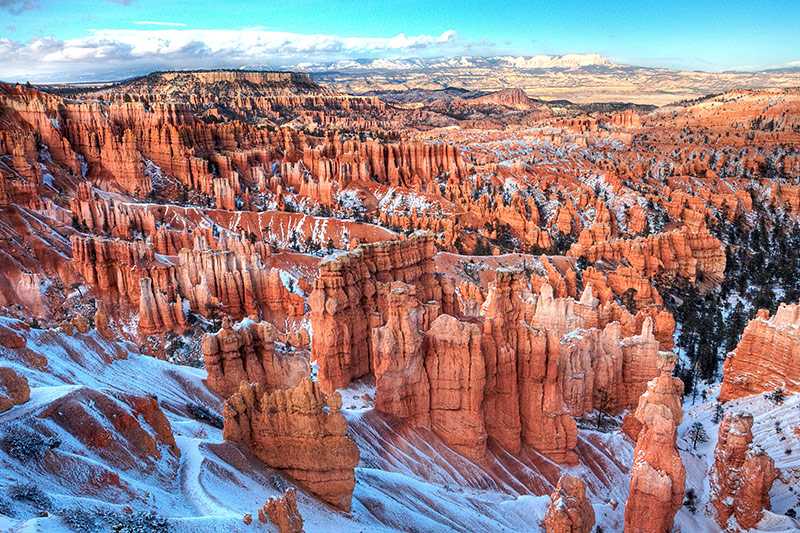Bryce Canyon National Park
Bryce Canyon National Park is situated along the eastern edge of the Paunsaugunt Plateau in the state of Utah. Despite its name, the park is not a canyon, but a series of striking naturally formed...
Bryce Canyon National Park is situated along the eastern edge of the Paunsaugunt Plateau in the state of Utah. Despite its name, the park is not a canyon, but a series of striking naturally formed amphitheatres. Bryce Canyon covers an area of 145 km2 (56 sq mi) and sits at an elevation of between 2,438 and 2,743 m (8,000 and 9,000 ft).
Landscape Features
Geological sculptures...
Things to do near Bryce Canyon National Park
Attractions near Bryce Canyon National Park
Activities
About Bryce Canyon National Park
Bryce Canyon National Park is situated along the eastern edge of the Paunsaugunt Plateau in the state of Utah. Despite its name, the park is not a canyon, but a series of striking naturally formed amphitheatres. Bryce Canyon covers an area of 145 km2 (56 sq mi) and sits at an elevation of between 2,438 and 2,743 m (8,000 and 9,000 ft).
Landscape Features
Geological sculptures known as hoodoos are the park’s most distinctive feature. The harsh elements carved these rocks over hundreds of years creating the breathtaking spires and pinnacles that stand today. Many of the elder Paiute Indians call the hoodoos Anka-ku-was-a-wits, which translates as ‘red painted faces’. The colourful red, white and orange rocks are a magnificent sight, particularly at sunrise and sunset.
Activities
The park is relatively remote compared to the nearby Zion and Grand Canyon National Parks and so is less visited, drawing in around 1 million visitors every year. Most visitors come for the spectacular vistas. The scenic drive provides access to 13 viewpoints, some of which offer panoramic views of three states. From the points at Yovimba and Rainbow visitors can see the Kaibab Plateau and Navajo Mountain some 145 km (90 mi) away. Untouched by light pollution, the park is an ideal location for stargazing and, on a clear night, up to 7,500 stars can be seen with the naked eye.
Hiking is a popular activity and the park maintains 10 marked trails. These trails range in difficulty and distance: short trails offer a gentle stroll in the park, while there is a 37 km (23 mi) overnight trail for the well-prepared. Other activities include horse riding, snowshoeing, cross-country skiing and, of course, landscape photography.
